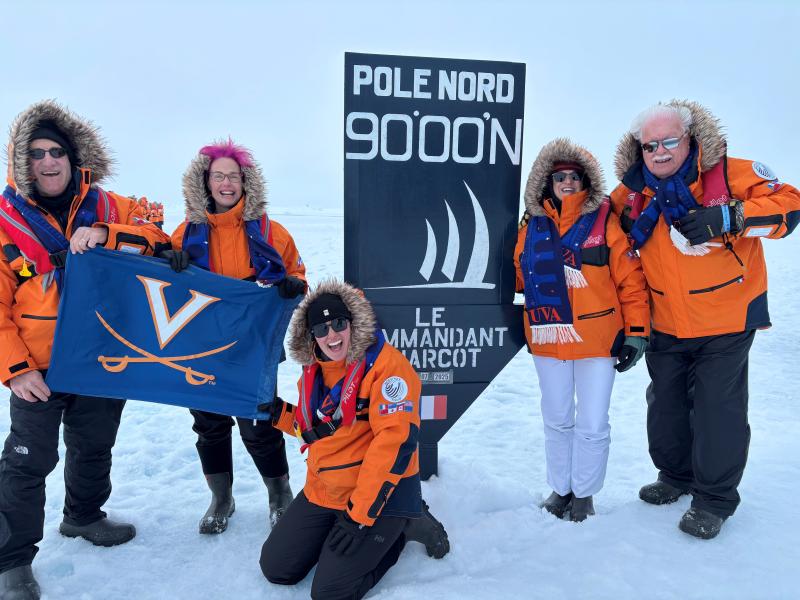Following in the Footsteps of Arctic Explorers

Earlier this summer, Environmental Sciences professor Howard Epstein got to break ice with other Arctic researchers at perhaps the most appropriate of locations.
Invited to join a University of Virginia Office of Engagement-sponsored cruise last July, Epstein served on the expedition’s panel of experts providing lectures and talks to the cruise passengers, including a small group of UVA alumni and friend travelers and their family members, as they navigated to the North Pole.
The Sidman P. Poole Professor of Environmental Sciences, Epstein was joined on the expedition by Arctic researchers and other scientists from the University of California, Berkeley, Harvard University, the Arctic Economic Council, Nanjing Universities and other institutions. For two-and-half weeks of sea travel, their home was the world’s first luxury polar expedition vessel: a PC2-class polar cruise ship capable of sailing to the geographic North Pole, through ice floes and frozen conditions that leave the surrounding seas unnavigable for ordinary ships.
"The trip was amazing and fascinating on so many levels, including the extreme physical environment of the Arctic, the unbelievable wildlife — polar bears, seals, whales, reindeer and birds — as well as the actual ice-breaking vessel that got us there,” said Epstein, whose current research focuses on the Arctic tundra, examining the recent dynamics of arctic tundra vegetation in response to changing climate and disturbances.
Asked to recommend a book for the UVA participants on the cruise, Epstein suggested Farthest North by Fridtjof Nansen, the Norwegian explorer who set out on an expedition to reach the North Pole in 1893. Aboard the newly constructed ship, the Fram, Nansen’s goal was to get stuck in the pack ice and then drift over the North Pole.
“Well, that didn't work,” Epstein said. “Nansen attempted to ski/sledge to the North Pole from the ship, with shipmate Hjalmar Johansen. They made it to just over 86 degrees N and then decided to turn back. They never made it back to the Fram, but did make it to Franz Josef Land, where they miraculously encountered a British expedition, and then ultimately made it back to Norway. The Fram drifted for three years until it was finally freed from the ice and sailed back to Norway in 1896. Amazing story!”
We’re here to answer your questions! Contact us today.






